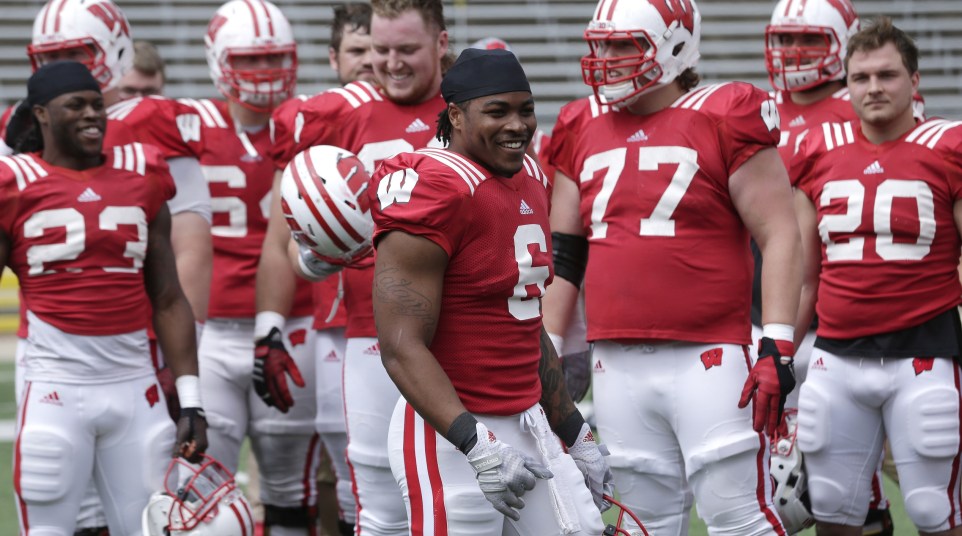Three keys for Wisconsin in 2016
Leading up to the start of the 2016 season, we’ll preview three key factors for every B1G team to have success.
Here are Wisconsin’s:
1. Run Corey Clement….a lot
It seems a little redundant to mention the run game in the keys to a successful season for Wisconsin. But it may be more important in 2016 than it ever has before. With such a brutal schedule ahead, it’s going to be critical for the Badgers to control the tempo in a lot of games.
Without Clement in the lineup last year, the Badgers were forced to throw the ball more frequently. It resulted in a decline in rushing production. Wisconsin averaged a whisker above 150 yards per game, 10th in the B1G. It was also the first time in a decade it didn’t have a 1,000-yard rusher in the backfield.
Clement should be a staple for the offense this season. He carried the ball for 949 yards and nine touchdowns behind Melvin Gordon III in 2014 and has been named to several watch lists in the offseason. More importantly, though, His reliability is essential if the Badgers want to survive the gauntlet without much damage.
Running the football can chew more clock and keep the likes of Leonard Fournette, J.T. Barrett and other major offensive threats on the sidelines longer. Clement has big play capabilities, too, and can provide a spark if the offense is struggling to gain momentum.
Clement will have a solid backup in Dare Ogunbowale, who rushed for 819 yards and seven scores in a primary role most of last season. The running game will back to a typical Wisconsin level. Clement needs to see an overwhelming majority of the carries, though, for multiple reasons.
2. Grow up fast
The Badgers have one of the least experienced teams in the B1G. Only 13 seniors are on the roster and 17 of the starters projected for Week 1 against LSU haven’t started a full season yet.
Some experienced leaders are sprinkled throughout the lineup. That’s most present on the defensive side of the ball. Corner back Sojourn Shelton, linebacker Vince Biegel and defensive end Chikwe Obasih have combined for 85 starts, led by Shelton who has 37 in his career. Those are nice pieces scattered throughout the defense to provide a spark to an otherwise young bunch.
The offensive side is a different story. Outside of Clement – who doesn’t have a whole lot of experience, either – the faces are rather unfamiliar. Unless they mature quickly, it’s going to be a feeding ground for the defenses of LSU, Michigan and Michigan State.
Like always, Wisconsin has plenty of talent to survive in the B1G. They just don’t have has much time to adjust to the learning curve as they’ve had in the past. They’ll have to learn on the fly, and hopefully, adjust quickly.
3. Get multiple receivers involved
For the past two seasons, Alex Erickson has been the receiver. Last year, he caught 77 passes for 978 yards. Behind him was Robert Wheelwright, who totaled 416 receiving yards. That’s quite a gap to cover.
Wheelwright, along with Jazz Peavy and Reggie Love are expected to be the primary targets this season with Wheelwright taking over go-to duties for the departed Erickson. But for Wisconsin’s offense to function more fluidly, it would be beneficial to have more guys catching passes.
Replacing Erickson’s production likely won’t be a one man job. Having multiple, dependable receivers will only help Bart Houston – and potentially Alex Hornibrook – this fall. The Badgers need as many weapons as possible.
It’ll be an interesting area to watch, for sure. Outside of Wheelwright, current Wisconsin receivers accounted for just 25 of the team’s 252 catches in 2015. Peavy was responsible for 20 of those.
